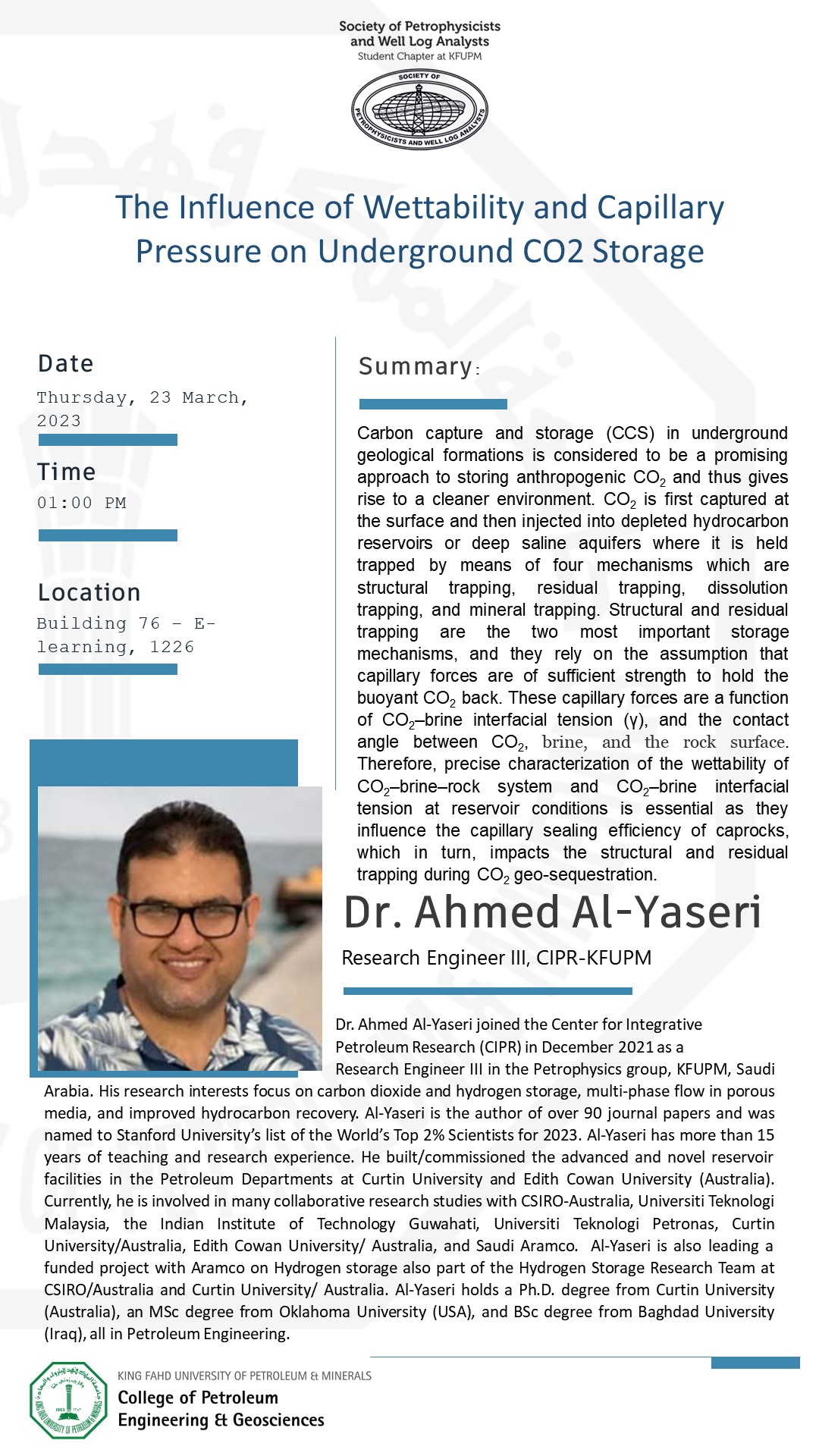march, 2023

Event Details
SUMMARY Carbon capture and storage (CCS) in underground geological formations is considered to be a promising approach to storing anthropogenic CO2 and thus gives rise to a cleaner environment. CO2 is
more
Event Details
SUMMARY
Carbon capture and storage (CCS) in underground geological formations is considered to be a promising approach to storing anthropogenic CO2 and thus gives rise to a cleaner environment. CO2 is first captured at the surface and then injected into depleted hydrocarbon reservoirs or deep saline aquifers where it is held trapped by means of four mechanisms which are structural trapping, residual trapping, dissolution trapping, and mineral trapping. Structural and residual trapping are the two most important storage mechanisms, and they rely on the assumption that capillary forces are of sufficient strength to hold the buoyant CO2 back. These capillary forces are a function of CO2–brine interfacial tension (γ), and the contact angle between CO2, brine, and the rock surface. Therefore, precise characterization of the wettability of CO2–brine–rock system and CO2–brine interfacial tension at reservoir conditions is essential as they influence the capillary sealing efficiency of caprocks, which in turn, impacts the structural and residual trapping during CO2 geo-sequestration.
Time
(Thursday) 1:00 pm - 2:00 pm
Location
Building 76, Room #1226
King Fahd University of Petroleum & Minerals,
Organizer
SPWLA - Student Chapter
